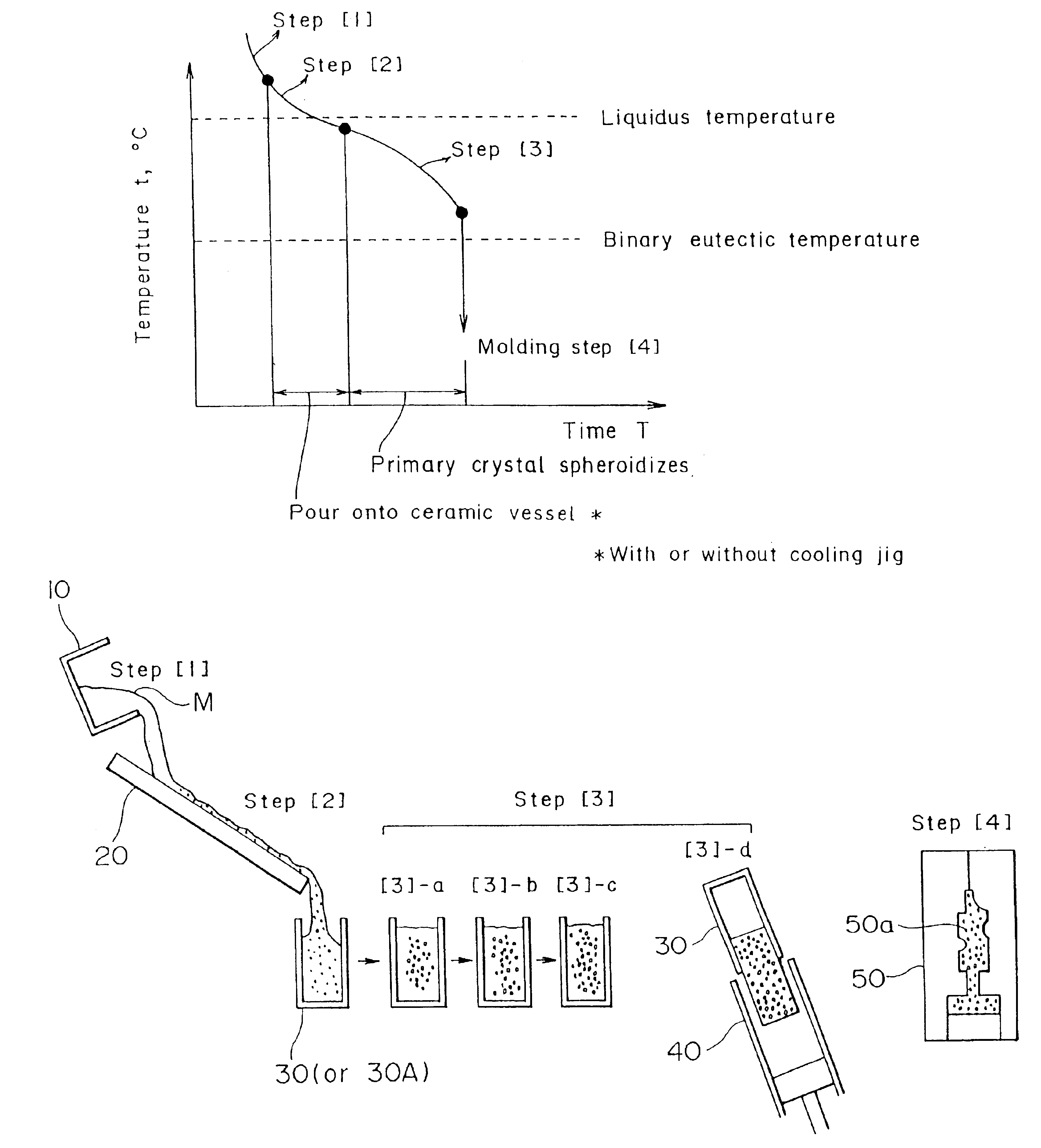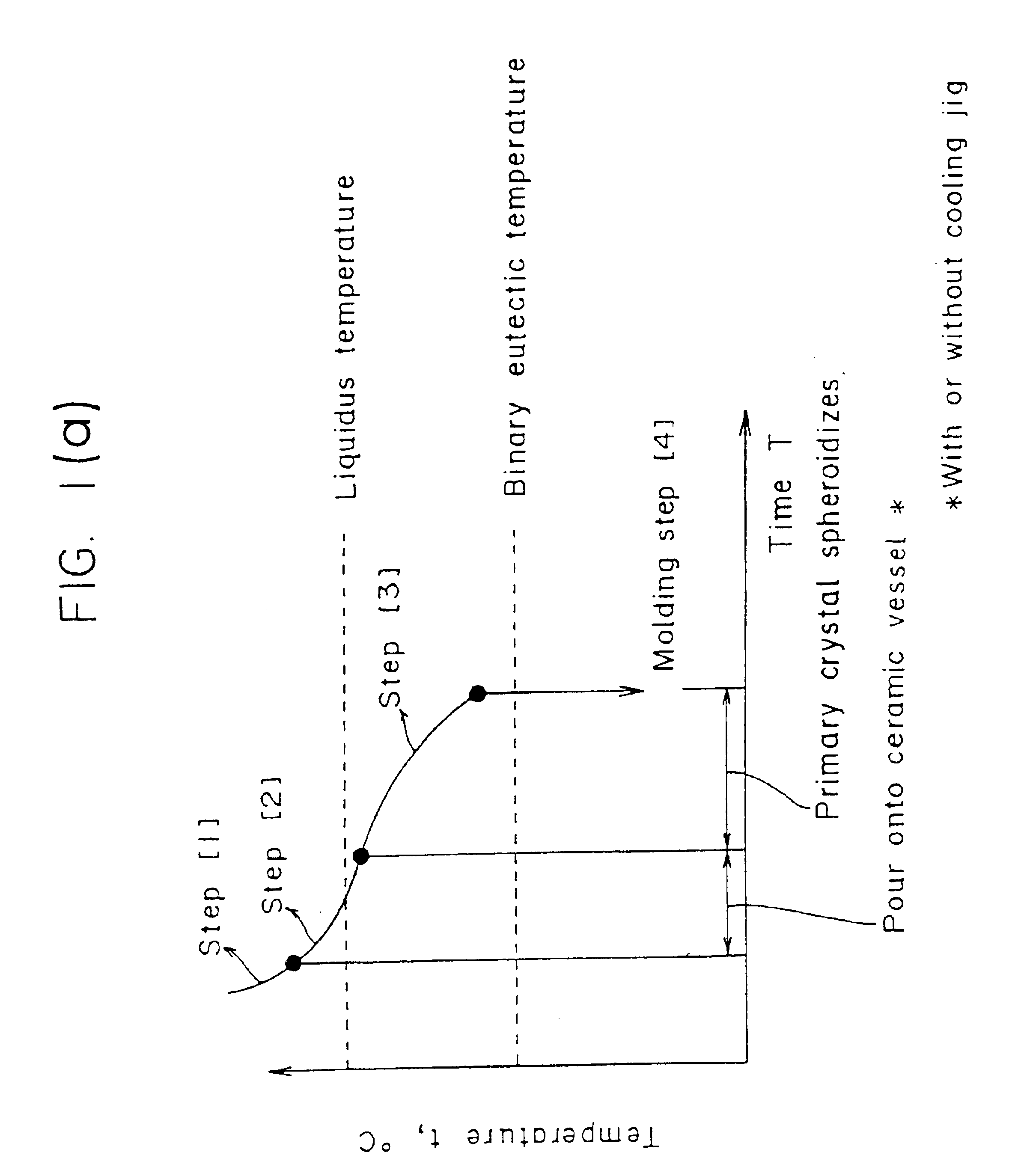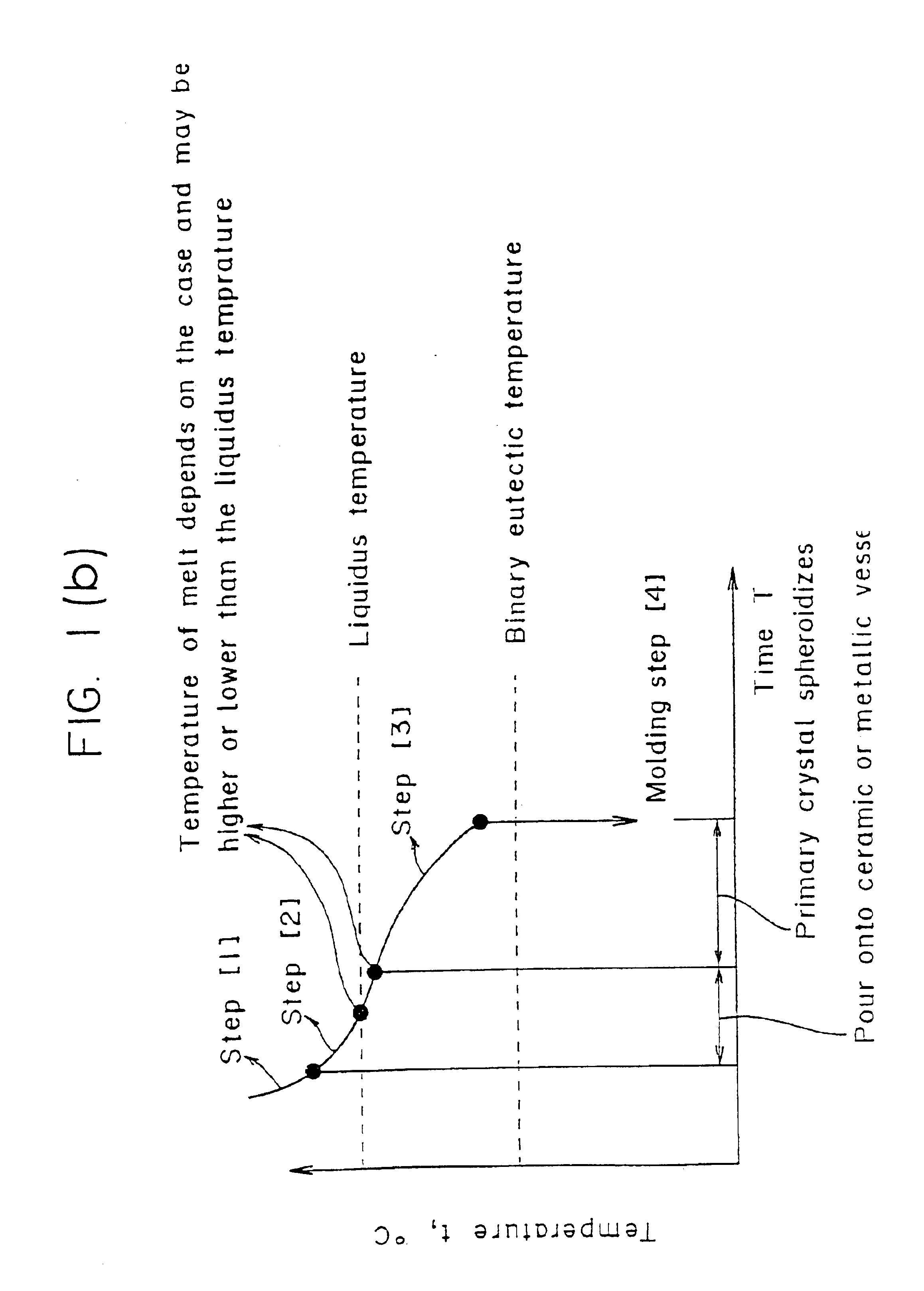Method of shaping semisolid metals
a semi-solid metal and metal technology, applied in metal founding, chemistry apparatus and processes, etc., can solve the problems of cumbersome method (a) and high production cost, and the above-described conventional method has its own problems
- Summary
- Abstract
- Description
- Claims
- Application Information
AI Technical Summary
Benefits of technology
Problems solved by technology
Method used
Image
Examples
example 1
An example of the invention (as in the fifth to the tenth embodiments of the present invention) will now be described in detail with reference to accompanying FIGS. 1(a), 2(a), 3(a), 4, 5(a), 6(a), 7(a) and 8(a), in which: FIG. 1(a) is a diagram showing a process sequence for the semisolid forming of a hypoeutectic aluminum alloy having a composition at or above a maximum solubility limit; FIG. 2(a) is a diagram showing a process sequence for the semisolid forming of a magnesium or aluminum alloy having a composition within a maximum solubility limit; FIG. 3(a) shows a process flow starting with the generation of spherical primary crystals and ending with the molding step; FIG. 4 shows diagrammatically the metallographic structures obtained in the respective steps shown in FIG. 3(a); FIG. 5(a) is an equilibrium phase diagram for an Al--Si alloy as a typical aluminum alloy system; FIG. 6(a) is an equilibrium phase diagram for a Mg--Al alloy as a typical magnesium alloy system; FIG. 7...
example 2
An example of the invention (as in the eleventh to the thirteenth embodiments of the present invention) will now be described in detail with reference to accompanying drawings. As shown in FIGS. 9-12, the eleventh to thirteenth embodiments of the present invention is such that:
(1) the melt of a hypoeutectic aluminum alloy of a composition at or above a maximum solubility limit or a magnesium or aluminum alloy of a composition within a maximum solubility limit which are held superheated less than 300.degree. C. above the liquidus temperature is contacted with a surface of a jig having a lower temperature than the melting point of the alloy so as to generate crystal nuclei in the alloy solution which is then poured into an insulated vessel; or
(2) the melt of an aluminum or magnesium alloy that is held superheated to less than 100.degree. C. above the liquidus temperature is directly poured into an insulated vessel without using any jig, thereby generating crystal nuclei in the liquid ...
example 3
An example of the invention (as in the fourteenth to fifteenth embodiments of the present invention) will now be described in detail with reference to the accompanying Figs. 3(a), 7(a), 8(a) and 21-28, in which: FIG. 21 is a side view of an apparatus 100 for producing a semisolid forming metal; FIG. 22 is a perspective view of a cooling jig 1 as part of the nucleus generating section 12 of the apparatus 100; FIG. 23 shows in cross section two other cooling jigs 1A and 1B; FIG. 24 is a sectional side view of another cooling jig 1C which is funnel-shaped; FIG. 25 is a plan view showing the general layout of another apparatus 100A for producing a semisolid forming metal; FIG. 26 is a longitudinal section A--A of FIG. 25; FIG. 27 is a longitudinal section B--B of FIG. 25; FIG. 28 is a longitudinal section of an insulated vessel 22; FIG. 3 shows a process flow illustrating the method of producing a semisolid forming metal; FIG. 7 is a diagrammatic representation of a micrograph showing t...
PUM
 Login to View More
Login to View More Abstract
Description
Claims
Application Information
 Login to View More
Login to View More - R&D
- Intellectual Property
- Life Sciences
- Materials
- Tech Scout
- Unparalleled Data Quality
- Higher Quality Content
- 60% Fewer Hallucinations
Browse by: Latest US Patents, China's latest patents, Technical Efficacy Thesaurus, Application Domain, Technology Topic, Popular Technical Reports.
© 2025 PatSnap. All rights reserved.Legal|Privacy policy|Modern Slavery Act Transparency Statement|Sitemap|About US| Contact US: help@patsnap.com



